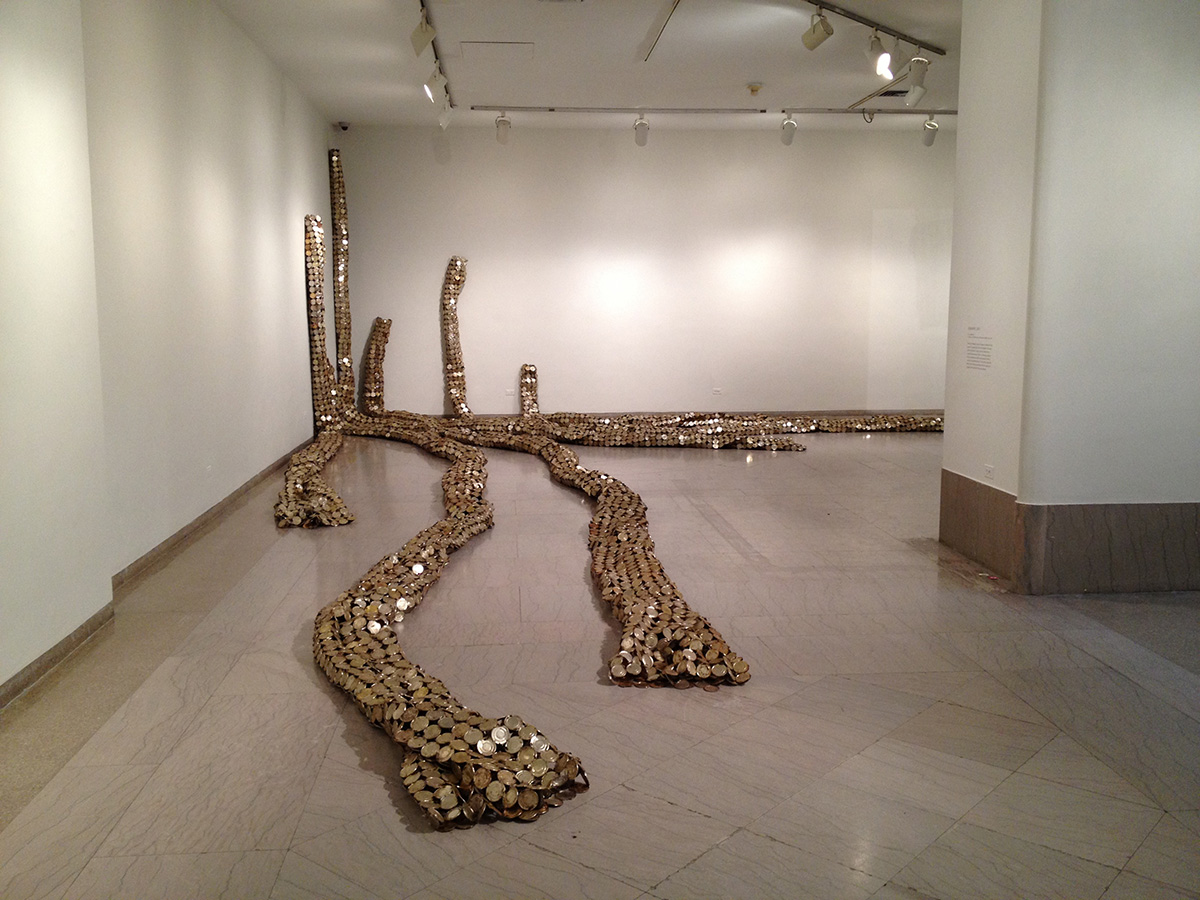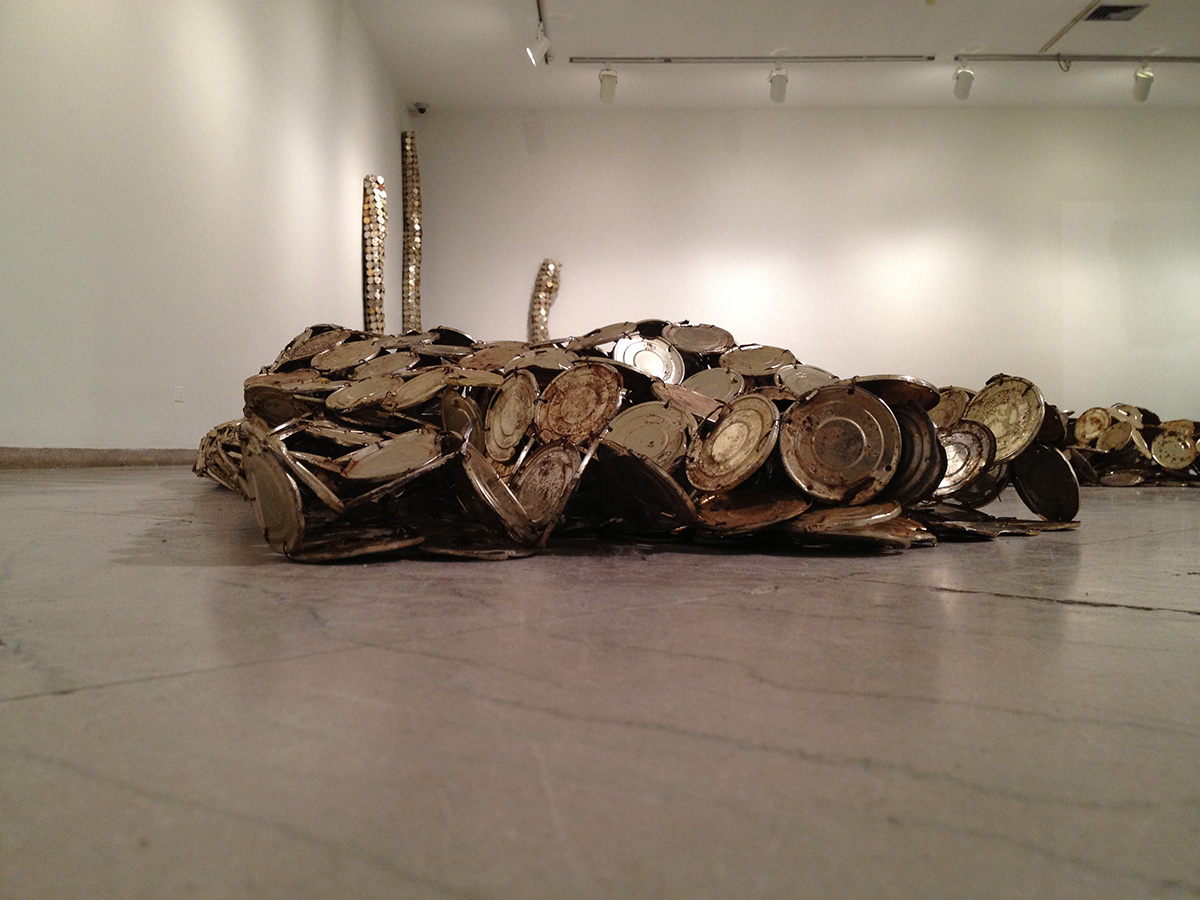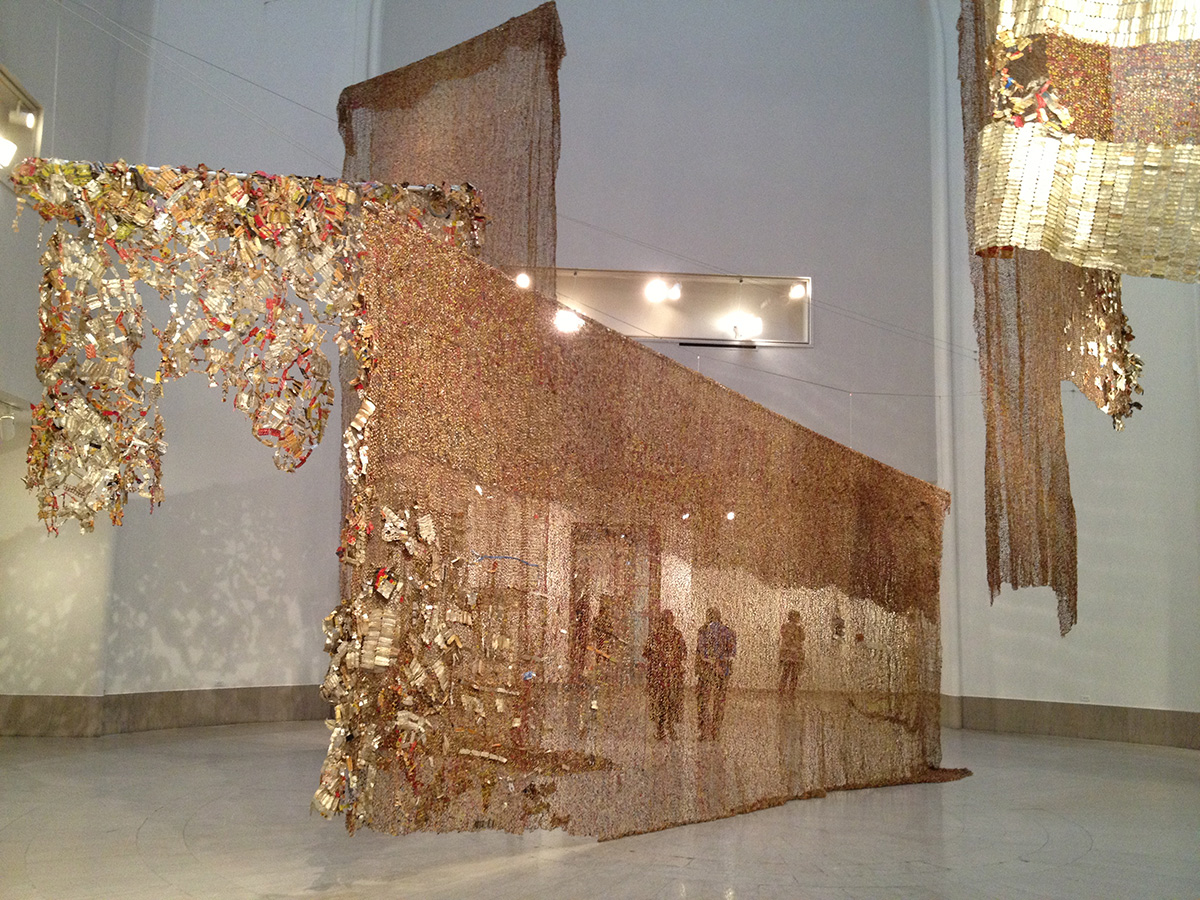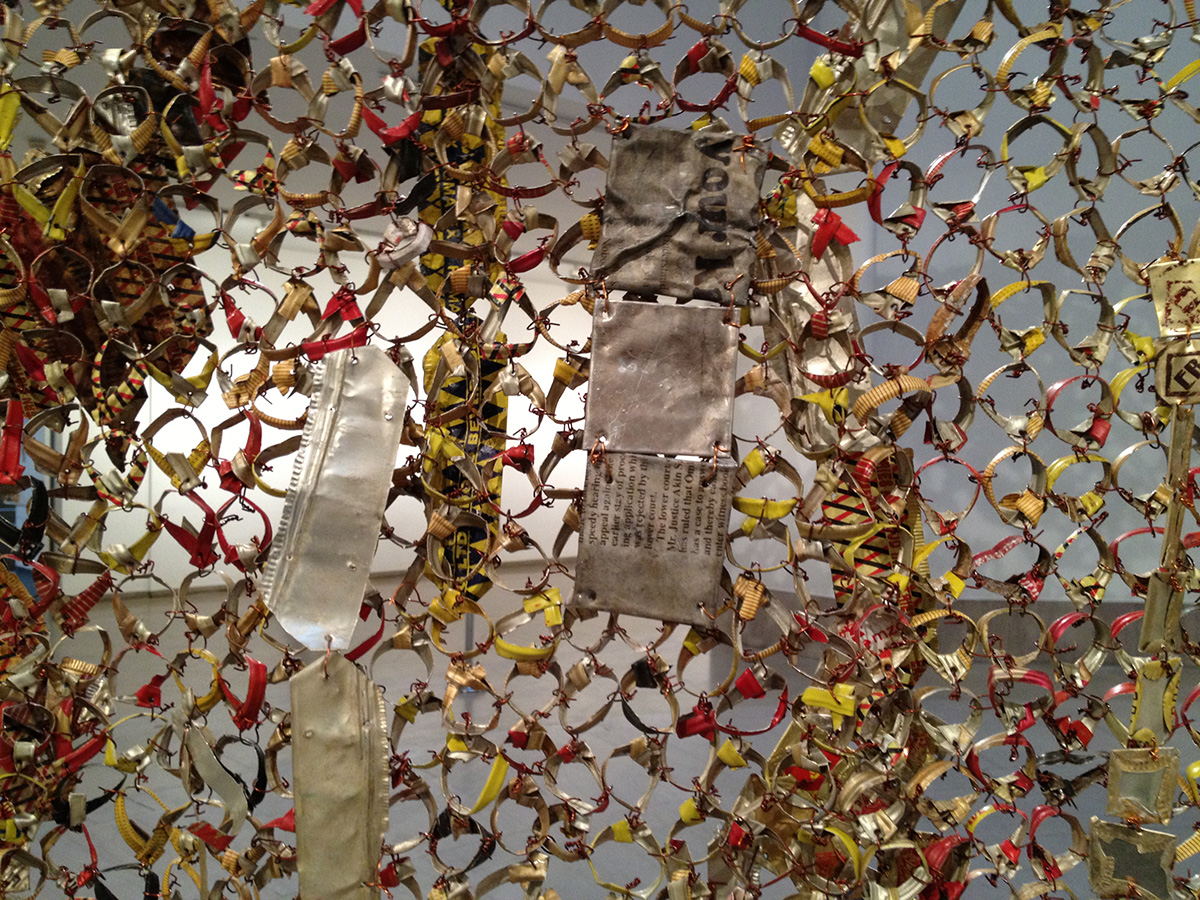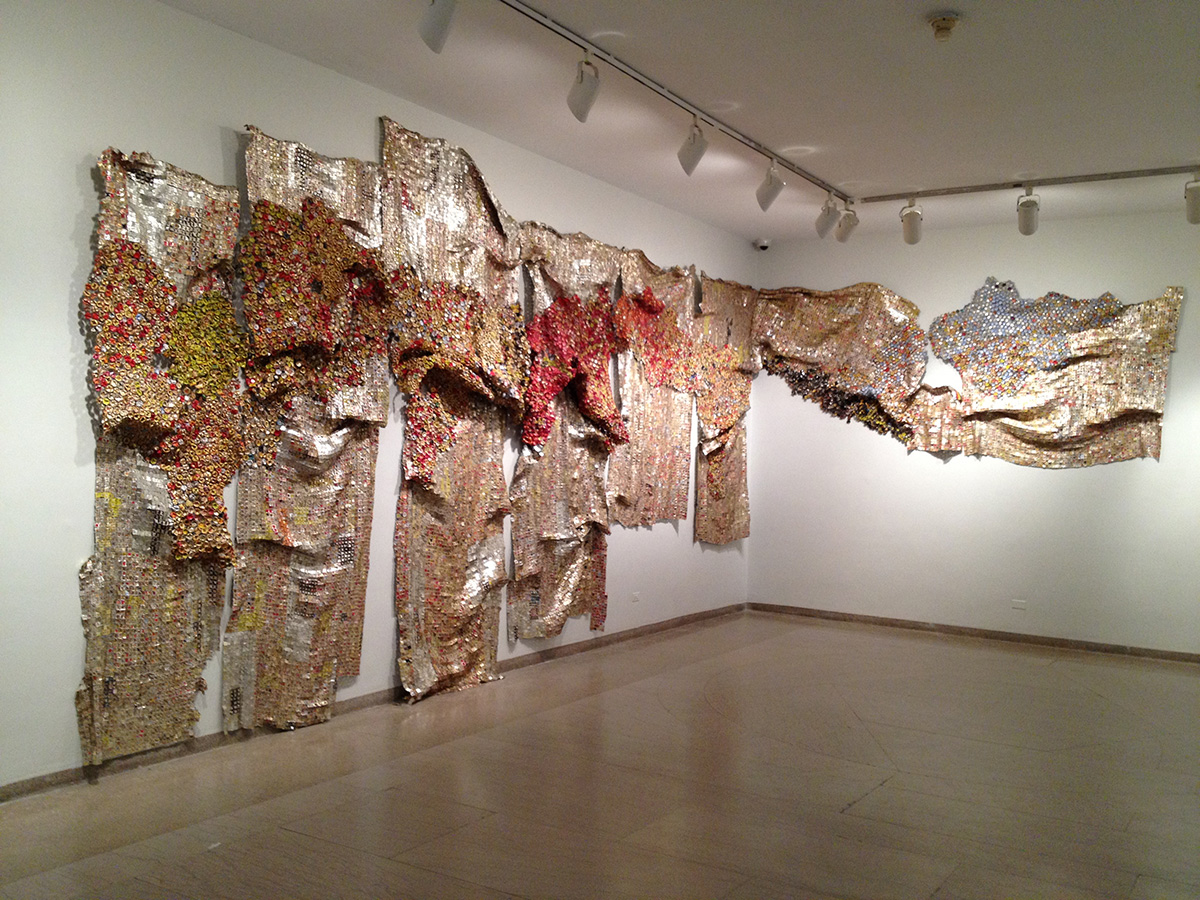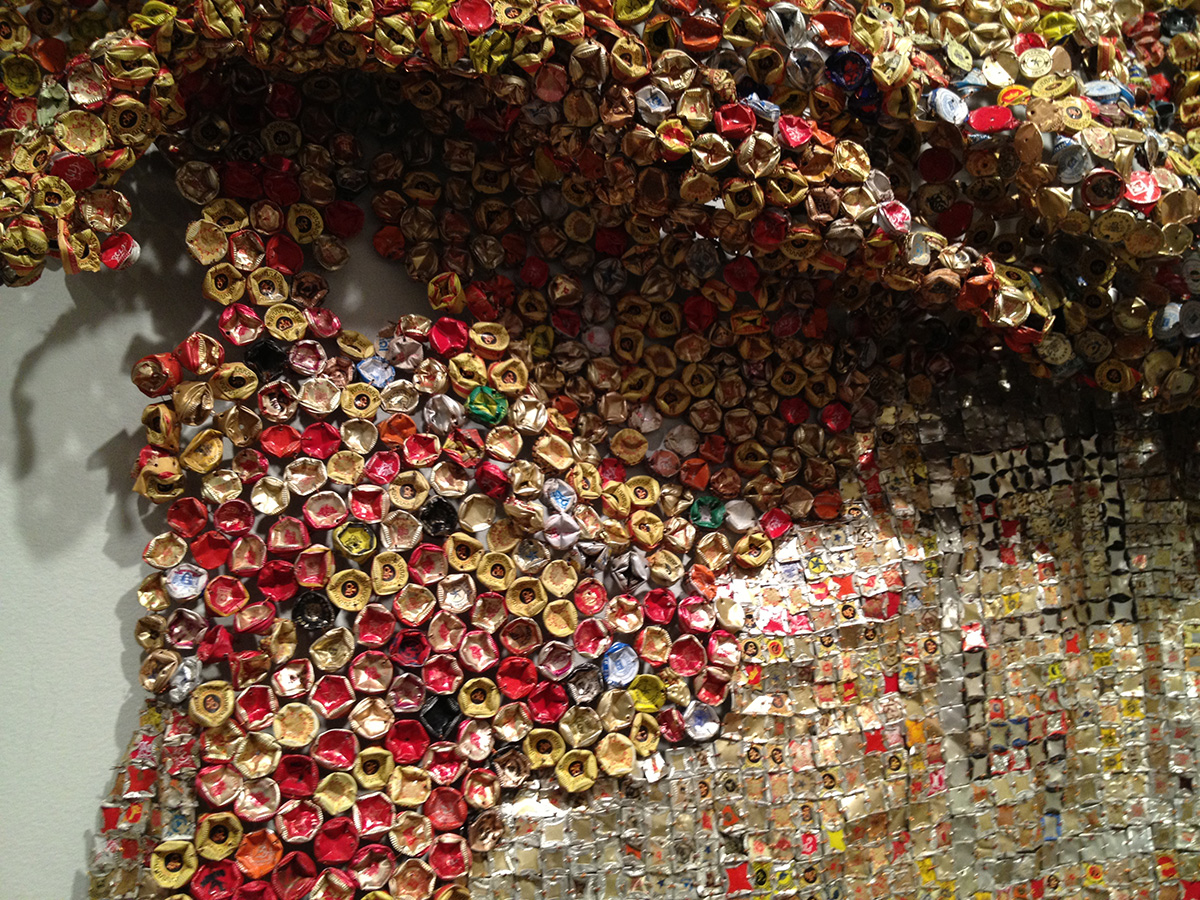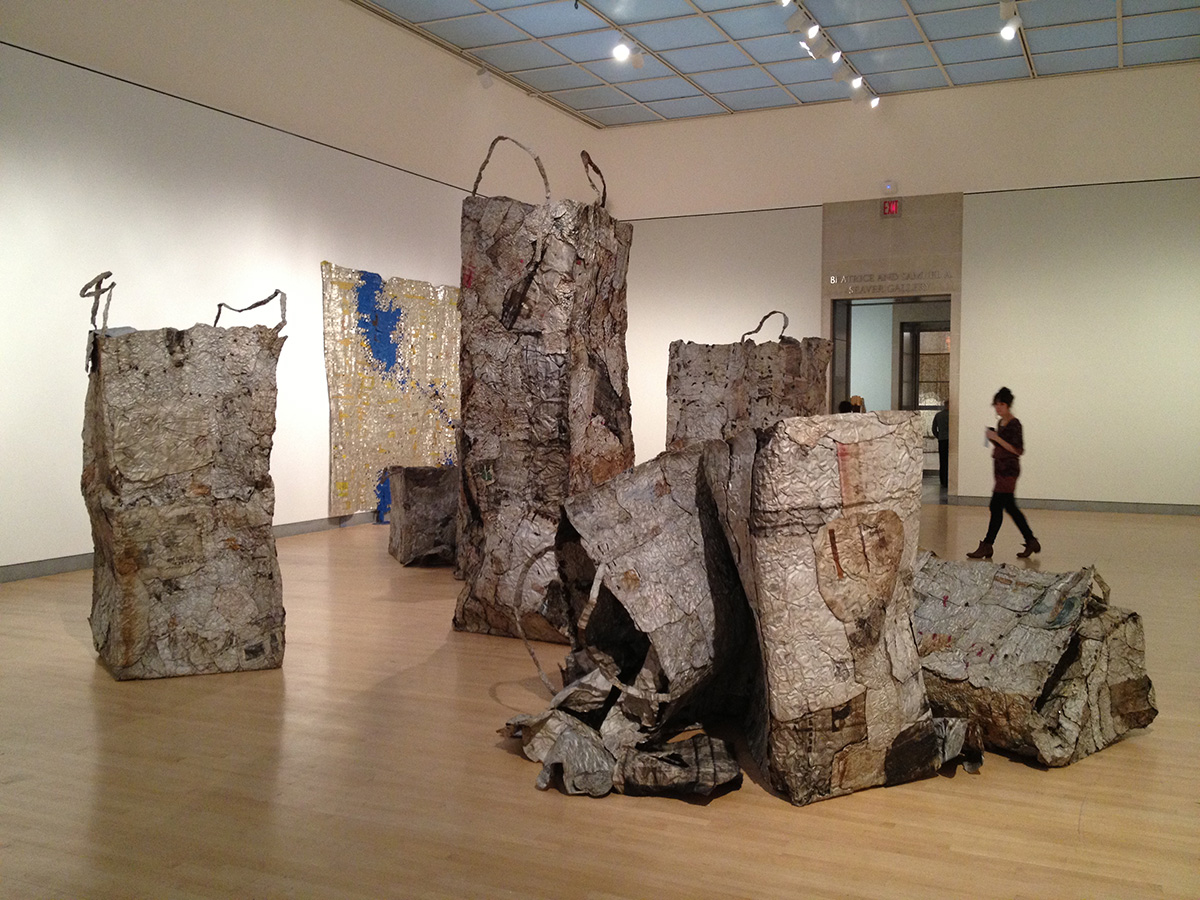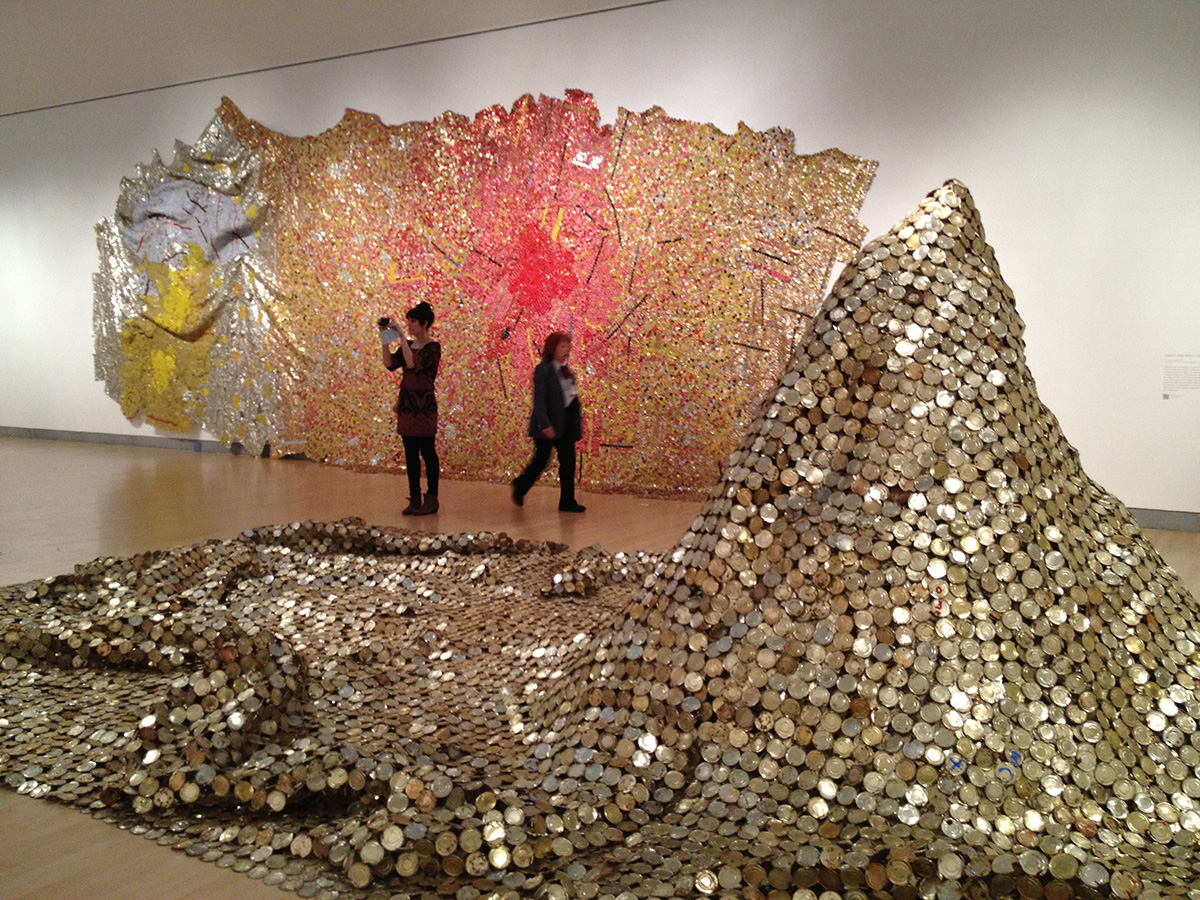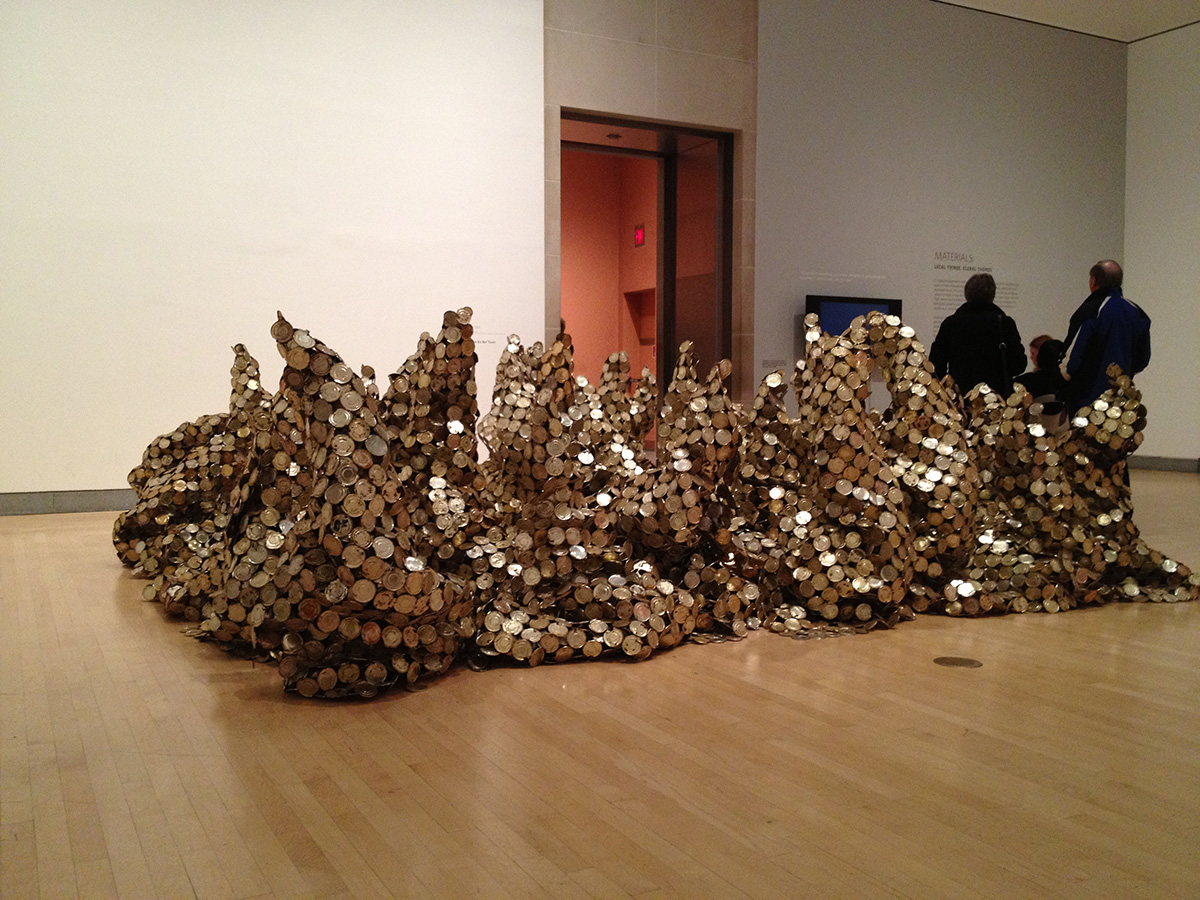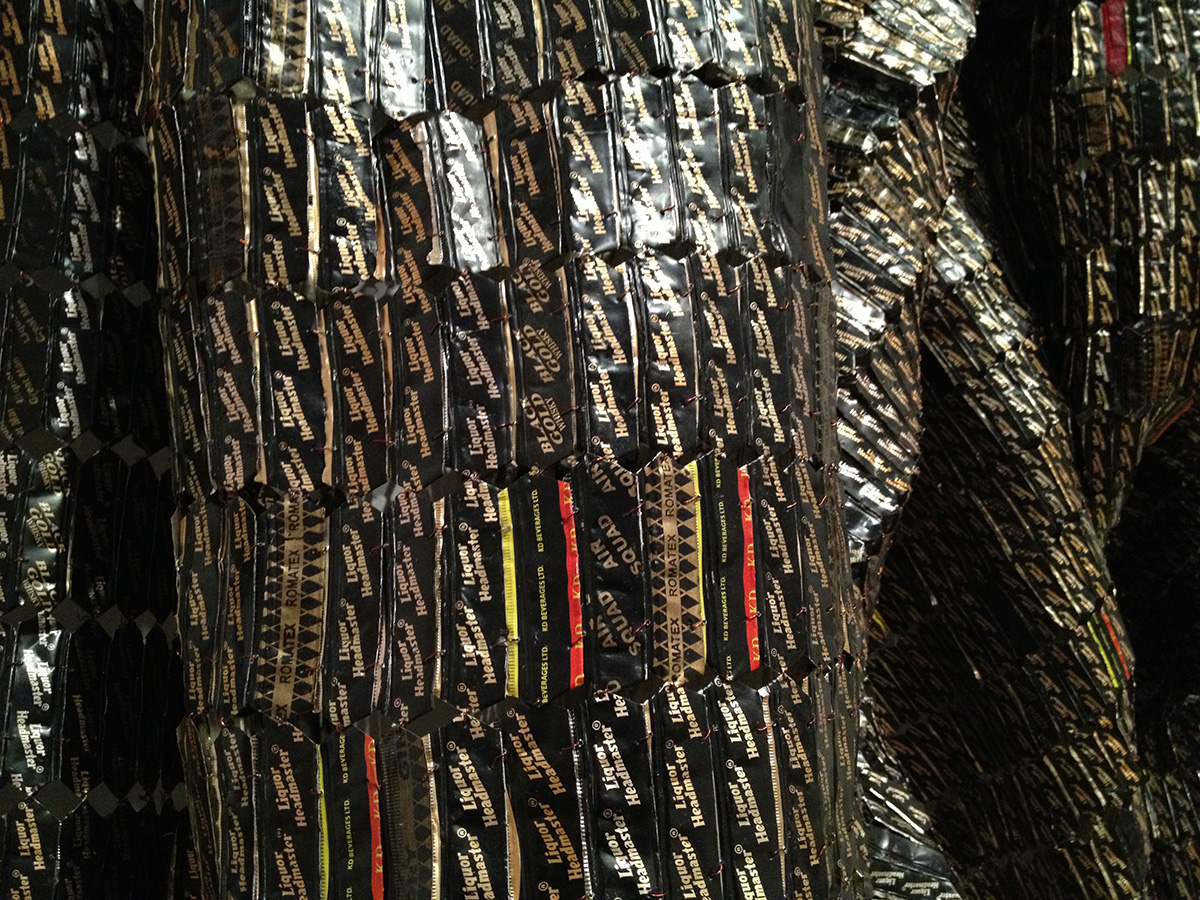Archive for March 5th, 2013
El Anatsui at the Brooklyn Museum
Following a visit to El Anatsui’s exhibition at the Brooklyn Museum (on view through August 14th) a friend commented – what a great shtick – use discarded material and unskilled labor to produce large scale work that can be folded for easy travel in a globalized art market. I’m paraphrasing here, but the point is clear – the work is formulaic and beautifully executed as high-end commodity. My friend is a Filipino-American artist/academic well versed in post-colonial studies and critical culture. El Anatsui is an African artist born in Ghana, working in Nsukka, Nigeria and trained in Western European Art. The brilliance of the work is applying minimalist conventions while using non-Western materials to create large scale abstraction. It is mesmerizingly beautiful to look at and various meanings may be allotted to the work – so it is aesthetic with theoretical potential.
The minimalist conventions include the use of least possible materials and repetition to create the maximum effect by using discarded mass produced materials such as lids from tin cans, bottle caps, newspaper printing plates… As the mass-produced products are from Nigeria or other African countries, the work presents a distinct quality from parallel work created by U.S. and European artists using recycled American and Western products. The unfamiliar labels and unique colors of these discarded elements adds a veil of the other for a Western art audience. All this said, there is plenty of reason to praise the work – it is aesthetically beautiful, unique, grand in scale, works from a distance as well as up close, reflects waste while recycling the waste and the artist brings racial diversity to a still all too white art world.
In the end, I’m writing about the work because I find it problematic. El Anatsui is embraced by the Art World and in his work, I perceive the colonizing effects of Western Art and Art History. By combining his Western Art training with the products of his culture, he has established a unique niche. In the end the work doesn’t move me. I don’t feel that the various pieces present an entry point. They are nice big objects, neat to look at for a bit, but with little resonance. If I was an art collector, on the other hand, I’m sure I’d buy in to it and see both it’s material and constructed cultural value.
Click on the images below to view at larger dimensions.
